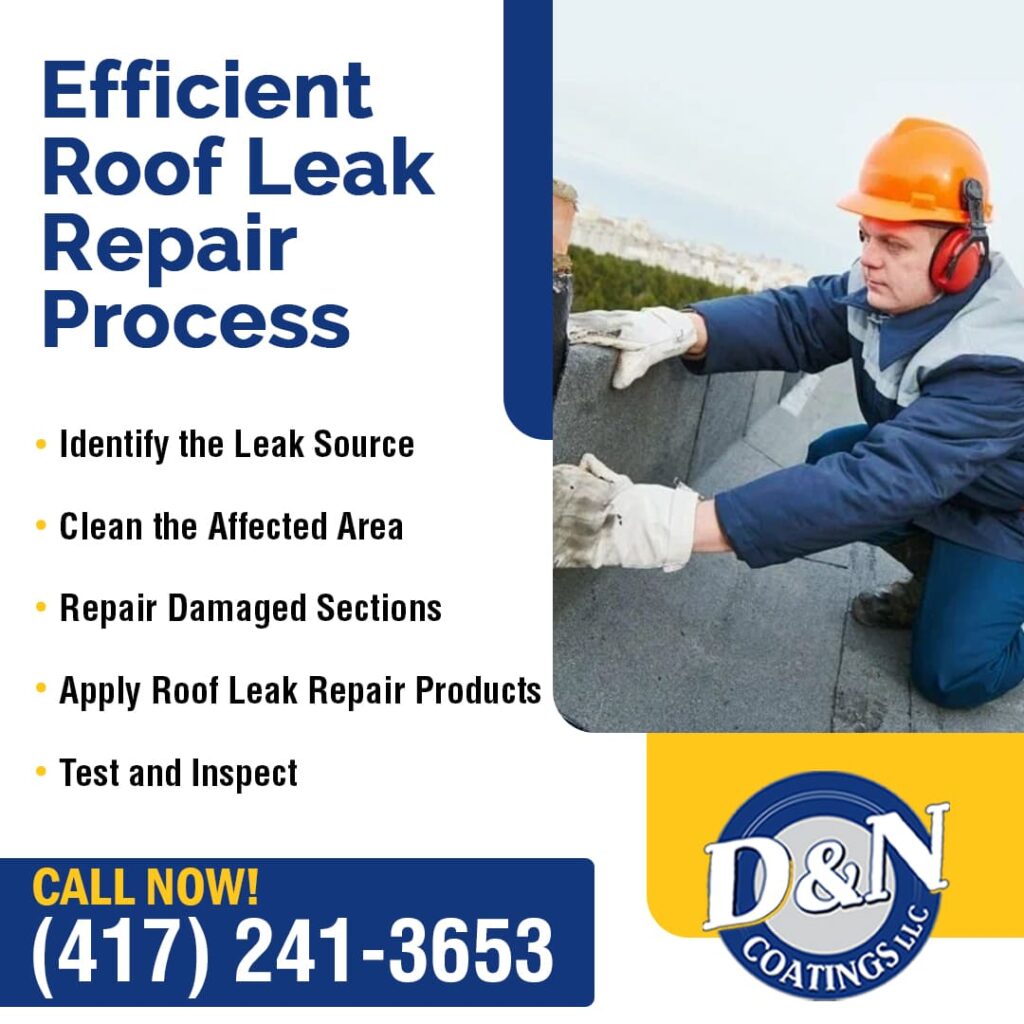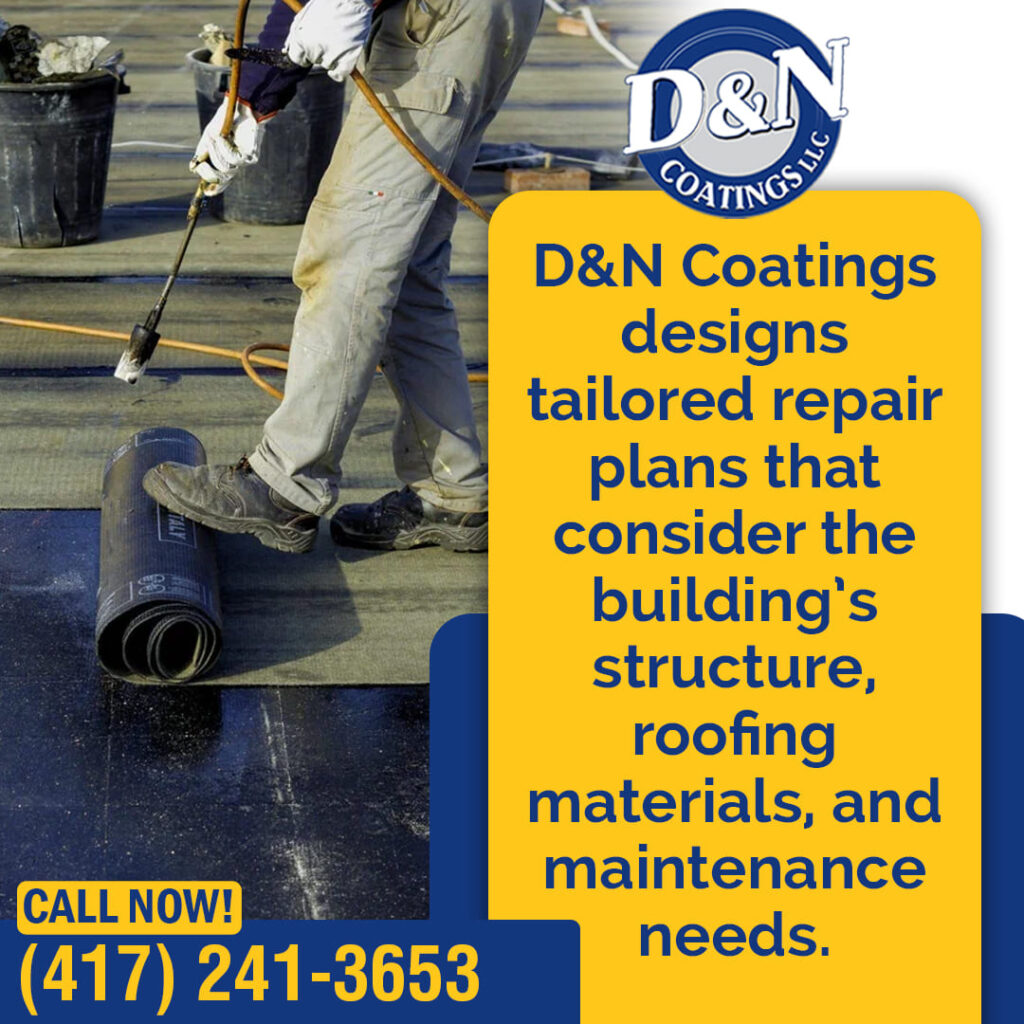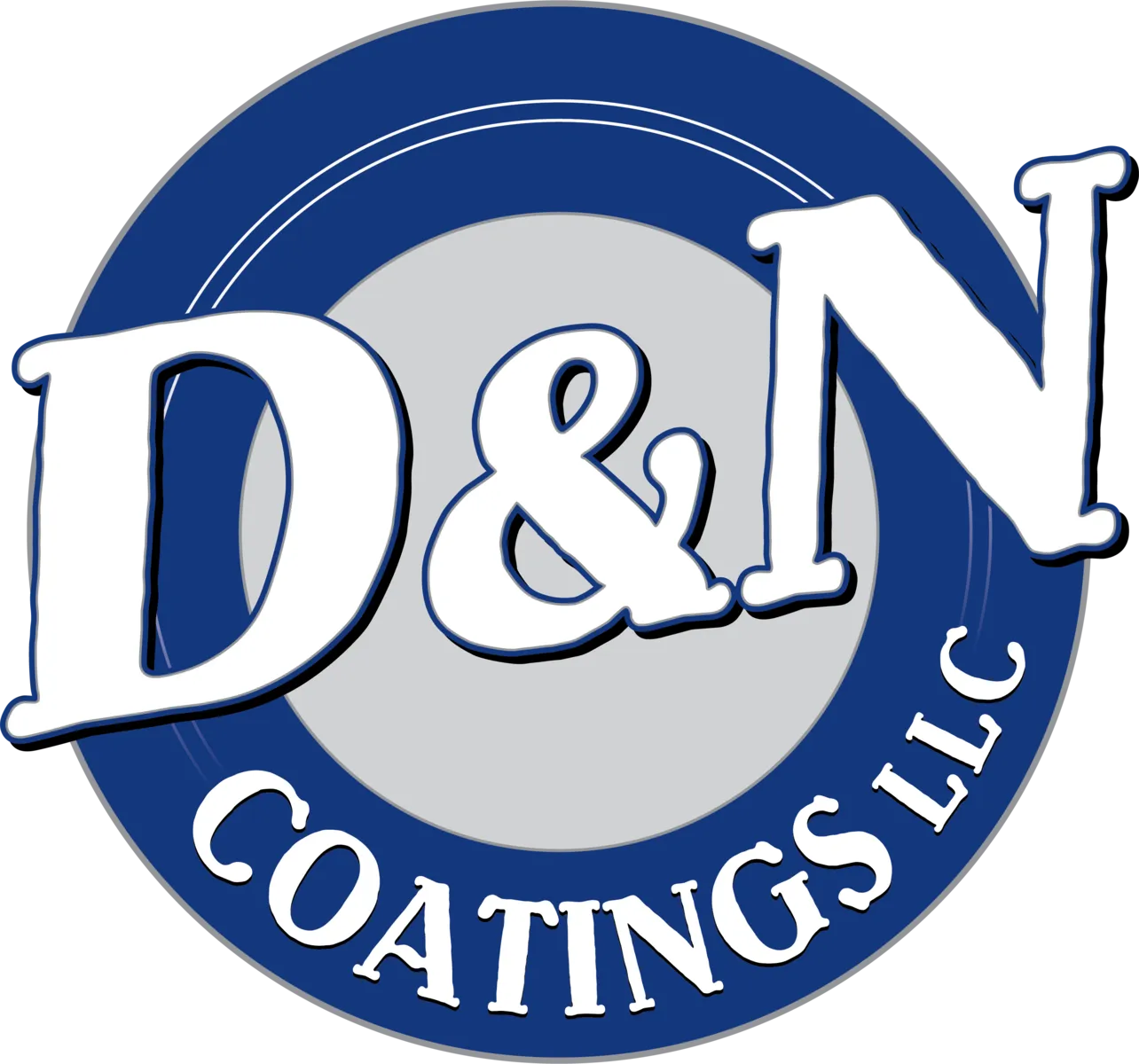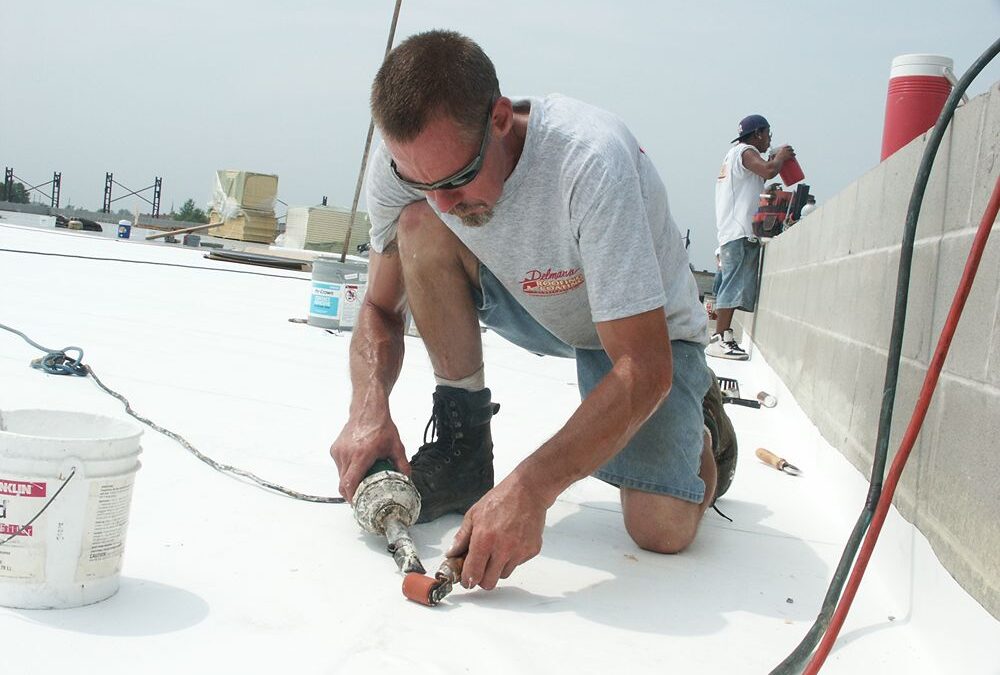Commercial roof leaks can lead to costly damage and operational disruptions if not addressed promptly. Facility managers rely on professional guidance to manage roof leak repair effectively and maintain the integrity of their buildings. This guide outlines clear steps for identifying and repairing roof leaks, helping reduce downtime and protecting commercial properties from water damage.
D&N Coatings, a trusted roofing specialist based in Hartville, MO, offers professional commercial roof leak repair services tailored to the unique needs of businesses. Using proven methods and high-quality materials, D&N Coatings supports facility managers in maintaining durable, leak-free roofs. Exploring the process of roof leak repair empowers managers to respond quickly and safeguard their investments.
Impact of Roof Leaks on Commercial Properties
Roof leaks can seriously damage your building’s structure and drive up maintenance costs. When water gets through your roof, it weakens the roofing materials over time. This damage can lead to mold growth and cause harm to your building’s interior, such as stained ceilings, damaged walls, and compromised insulation.
Water infiltration breaks down roofing membranes and materials, which lowers their durability. Once water passes through, it creates a moist environment inside your building that encourages mold. This harms the building and can also affect the health and comfort of everyone inside.
Common Causes of Commercial Roof Leaks
Most commercial roof leaks result from damaged membranes, faulty flashing, or clogged drainage systems. Cracks or tears in the roofing material are common entry points for water. Flashing around vents or chimneys can wear out, allowing leaks. Blocked gutters and drains cause water to pool, increasing pressure on the roof and causing leaks.
You might find cracks or holes in the roofing membrane or worn seals around rooftop equipment. Gutters clogged with debris prevent water from flowing away properly, leading to standing water and increased risk.
Risks Associated with Untreated Roof Leaks
Leaving roof leaks unattended can cause structural damage and expensive repairs down the line. Constant water exposure weakens key parts of your building’s framework and encourages mold growth, which can spread quickly. Moisture near electrical wiring increases the chance of shorts and fire hazards. Wet insulation loses its ability to regulate temperature, causing higher energy costs.

Delaying repairs increases the chance of widespread damage and higher costs. The longer leaks continue, the harder it becomes to fix the issues without major renovations, which may disrupt your business operations.
Step 1: Locate the Source of the Leak
Finding the exact source of the roof leak is necessary to avoid ineffective repairs. Starting from where you notice the leak inside the building, trace the problem upward toward the roof. This method helps you identify the area requiring commercial roof leak repair.
Checking the Roof Surface for Damage
Walk on the roof carefully and look for visible signs of roof leaks such as cracks, punctures, blistering, or areas where water collects. For example, on built-up roofs, missing gravel or cracks in the rubber membrane often lead to roof leaks that need prompt attention.
Inspecting Flashings, Seals, and Roof Penetrations
Flashings around chimneys, vents, and skylights protect vulnerable points. Damaged or loose flashings are common causes of a roof leak. You should check that seals remain intact and properly secured to support effective roof leak repair.
Examining Interior Signs of Leaks
Inside your building, look for ceiling stains, mold patches, or peeling paint; these are clear signs of a roof leak. Drips or damp insulation near walls and ceilings help confirm where water is entering and guide your commercial roof leak repair efforts.
Step 2: Clean and Dry the Affected Area
Cleaning the area around the roof leak is necessary for the repair to hold properly. Before applying any roof leak repair materials, remove all dirt, debris, and moisture from the site. This preparation supports effective commercial roof leak repair.
Removing Debris and Moisture
Use brushes, cloths, or air blowers to clear away any debris and moisture. If the surface remains damp or dirty, sealants may not stick well, which can lead to early failure of the repair.
Importance of Proper Surface Preparation
A clean, dry surface helps the repair last longer and resist further roof leaks. If the area is not prepared correctly, you risk the patch lifting or the sealant cracking, which means the leak could return soon after repair.
Step 3: Repair Techniques for Common Roof Leak Types
Different roof leaks require specific repair methods to provide lasting results. The right approach depends on the type of roof leak and the materials involved in your commercial roof leak repair.
Fixing Cracks and Punctures in Roofing Membranes
Minor cracks or punctures in roofing membranes can be repaired using patch kits or roofing cement. For example, applying EPDM patches with primer on rubber roofs helps stop a roof leak effectively.
Sealing Around Roof Penetrations and Flashings
Roof leaks often occur near penetrations like vents or chimneys. Applying roofing sealant around these areas is a common roof leak repair technique. Polyurethane or silicone sealants that match your roofing material prevent further water intrusion.
Replacing Damaged Shingles or Roofing Materials
Damaged or missing shingles and roofing materials contribute to roof leaks. Replacing these with matching materials, such as asphalt shingles or metal panels, is an important part of commercial roof leak repair.
Step 4: Applying Roof Leak Repair Products
Applying roof leak repair products correctly helps create a strong, waterproof barrier that protects your commercial roof from further damage.It’s important to carefully follow the instructions provided by the product manufacturer and apply materials evenly to maximize the lifespan of the repair. Proper application plays a vital role in the success of commercial roof leak repair by preventing water from seeping through weak spots.
Types of Roof Sealants and Coatings
There are several common products used for effective roof leak repair, each designed to suit specific roofing materials and weather conditions. Elastomeric coatings are flexible and ideal for roofs that expand and contract with temperature changes.
Silicone sealants offer excellent resistance to UV rays and moisture, making them suitable for various commercial roofing types. Bitumen-based products, such as roofing tar or asphalt, provide a durable seal, especially on flat or built-up roofs.Choosing the right product depends on the roofing material and the local climate where the building is located.
Proper Application Methods for Lasting Results
To maintain the effectiveness of your roof leak repair, apply sealants and coatings during dry weather conditions to avoid trapping moisture underneath. Use brushes, rollers, or spray equipment for even coverage, depending on the product and roof surface. In many cases, applying multiple layers is necessary to achieve full protection and extend the repair’s durability.
Allow adequate drying time between layers according to the product guidelines. Taking these steps carefully supports a reliable solution against roof leaks and reduces the chance of recurring issues.
Step 5: Testing the Repair
Testing the roof leak repair confirms that the problem is resolved before finishing the job. This step helps avoid additional damage and costly rework by verifying that the repair holds under real conditions.
Water Testing Procedures
To simulate rainfall, spray water over the repaired area for 15 to 30 minutes using a hose or sprinkler system. It’s important to cover the entire affected section evenly and maintain consistent water flow. This process replicates heavy rain conditions and checks how well the repair stands up to moisture exposure.

Inspecting for Continued Leak Signs
After the water test, carefully inspect the interior areas beneath the repair. Look for damp spots, discoloration, or water stains on ceilings, walls, or insulation. These signs indicate whether the roof leaks are still present or if the repair was successful. Additionally, monitor these areas over the next few days to catch any slow leaks that may not be immediately obvious.
If water infiltration is detected during or after testing, repeat the roof leak repair process. Check for overlooked damage or weak spots and apply necessary sealants or patches. Regular testing after repairs maintains the durability of roof leak repairs and helps extend the roof’s lifespan.
By thoroughly testing and inspecting the repair, you reduce the chances of future leaks and protect your building’s structure and interior. This step should be a standard part of any commercial roof leak repair project.
Preventive Measures to Reduce Future Roof Leaks
Taking preventive steps can help reduce the risk of roof leaks and extend the life of your commercial roofing system. Regular maintenance and timely inspections play a key role in managing the condition of your roof and avoiding costly commercial roof leak repair.
Regular Roof Maintenance and Inspections
Schedule inspections every quarter to check important components like flashing, roofing membranes, drains, and gutters. These areas are often the source of roof leaks when damaged or clogged.
Clearing debris promptly from gutters and drains allows water to flow freely, reducing water buildup that can cause leaks. Repairing minor damage, such as small cracks or loose flashing, at an early stage can prevent more serious roof leaks from developing over time.
Seasonal Preparation Tips for Commercial Roofs
Preparing your commercial roof for seasonal weather changes can minimize the chance of leaks during harsh conditions. Before the winter or rainy seasons, inspect vulnerable spots like seals around vents, skylights, and chimneys. Remove snow accumulation to reduce extra weight and prevent ice dams that can cause damage.
After storms, check for loose or missing materials and reinforce these areas quickly. These efforts reduce the need for urgent roof leak repair and help maintain your building’s protection against water intrusion.
The Role of D&N Coatings in Commercial Roof Leak Repair
D&N Coatings specializes in commercial roof leak repair and maintenance services. Our team provides thorough inspections, professional roof leak repair, and applies high-quality coatings that protect your building against recurring roof leaks.
Service Overview
D&N Coatings, based in Hartville, MO, offers a variety of solutions, including roof coating application, effective roof leak repair, and preventive maintenance. Our experience spans multiple roofing systems such as metal, membrane, and built-up roofs, enabling us to address roof leaks effectively across commercial properties.
Support for Facility Managers
Facility managers rely on D&N Coatings for customized commercial roof leak repair services and a fast response to any roof leak issues. Our prompt action helps reduce building downtime and lowers the need for costly repairs, extending the lifespan of your commercial roof.
Why Choose D&N Coatings
Using industry-approved materials and applicators, D&N Coatings delivers durable roof leak repair solutions. Our roof coatings improve waterproofing and contribute to energy efficiency by reflecting heat, helping your roof resist future leaks and maintain its integrity over time.
Get Reliable Commercial Roof Leak Repair!
Don’t let a roof leak disrupt your operations or damage your property. D&N Coatings provides dependable solutions for commercial roof leak repair, from inspections to long-lasting coating systems.
Contact us today at (417) 241-3653 to schedule a site assessment or request a service quote. Our team is ready to help keep your roof secure and your business protected.

